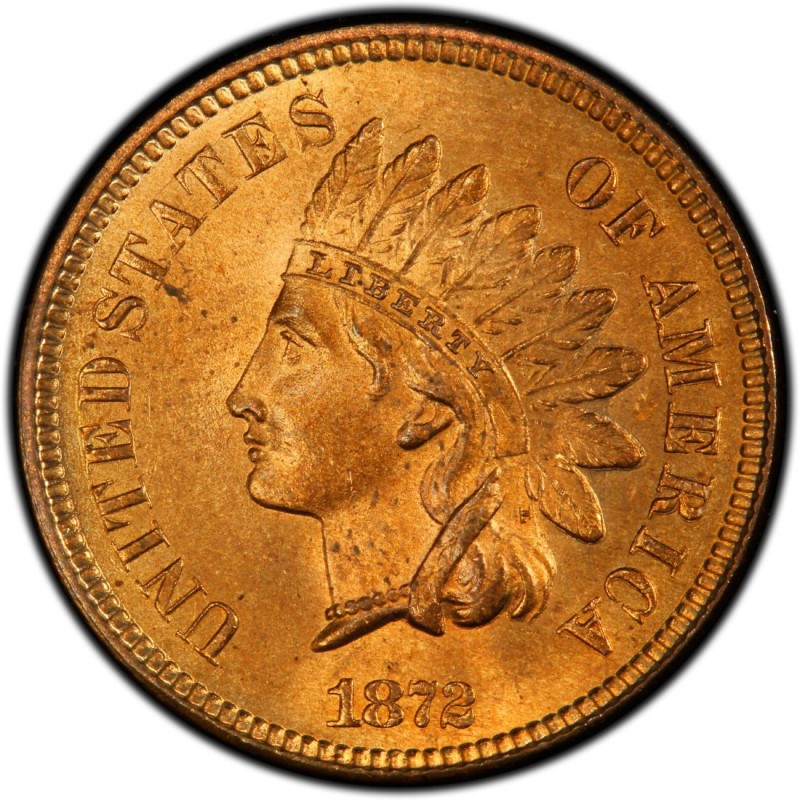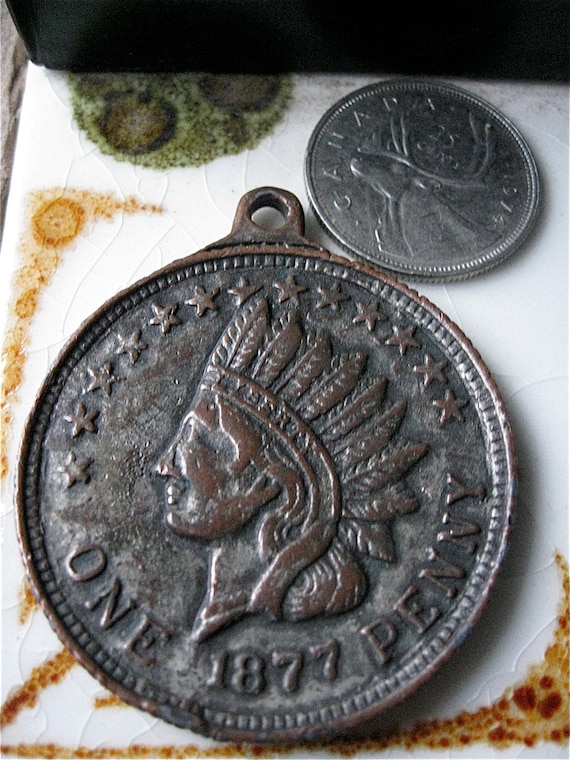The 1877 Indian Head penny is one of the scarcest coins of the 19th century. It’s also one of the rarest Indian Head pennies and serves as its popular key date. A lot of coin collectors spend years chasing after this rare penny! The 1877 penny is so old and valuable that nobody really has a chance of finding one in pocket change anymore. 1877 Indian head penny value is the highest of all Indian pennies. Considered the key to the series, value and demand is greater for an 1877 than any other Indian penny.


The 1877 Indian Head cent had a higher mintage than the 1909-S, yet commands an MS-65 value of $13,000 compared to $2,000 for the later coin.
Some coins have a more important place in the history of U.S. coin collecting than their price and mintage might explain. The 1877 Indian Head cent is one of those coins, with an importance way beyond its price or mintage.
Looking at the 1877 in a list of Indian Head cents, it is easy to see some of its potential. The 1877, with a mintage of 852,500, is clearly a more important Indian Head cent date, as the only other date to drop below the 1 million mark was the 1909-S. At $750 in G-4, as opposed to the $425 price of the 1909-S in the same grade, the 1877 is the more costly of the two, despite a higher mintage.
The situation continues in Mint State, as the 1877 sits at $4,000 in MS-60, while the 1909-S is at $750 and in MS-65, the 1877 is at $13,000, while the 1909-S is at $2,000.
Obviously, mintage is not everything in this pricing and that makes sense,as the 1909-S, issued at a time of great interest in the cents being produced at San Francisco, was probably much more heavily saved than the 1877.
1877 Indian Head Penny Ag


1877 Indian Head Penny Counterfeit
The importance of the 1877 is not, however, just in its price. The 1877 became an important coin, as it seemed to be the universal choice of a rare coin that people might be able to find.
It must be remembered that this was 1877. The bulk of the collectors at the time collected cents or lower denominations. They went about their collecting one of two ways - they either got the coins they wanted from circulation or they went to the U.S. Mint in the case of cents, which were only produced in Philadelphia at the time, and purchased a proof.
The influence of the proof purchases can be seen in the fact that while priced at $13,000 in MS-65, in Proof-65, the 1877 is priced at just $6,750. Throughout the Indian Head cents of the period, that trend can be seen, as the proof will frequently be less expensive than the Mint State of the same date. It's a case where while perhaps low mintage, the proof would receive better care and have a better chance of survival.
Purchased or found, any 1877 was quickly discovered by the collectors of the day as a better date. After all, there had been no Indian Head cents with a mintage below 1 million and that would stick in someone's mind.
Years later, coins like the 1877 would be heavily hoarded, but this was 1877 and people did not generally hoard coins on the notion that they would turn out to be valuable. While there was never hoarding in the case of the 1877, there would be a regular drain from the supply in circulation. Coin collecting did not grow much between 1877 and the arrival of the Lincoln cent in 1909. What new collectors there were would start with Indian Head cents in most cases and the 1877 would be the coin they wanted.
The reputation of the 1877 grew with time and became popular to depict on anything involving a rare coin. I can remember an Avon bottle, but it was on almost anything, be it a belt buckle or a U.S. postage stamp.
How much impact the fame has had on the price of the 1877 is hard to measure. Professional Coin Grading Service has seen 64 of them in MS-65 or better. The Numismatic Guaranty Corp. has seen 89. The numbers suggest that the fame which creates demand produced a higher price for the 1877 than simple numbers justify. When you purchase an 1877, don't expect great value, as it commands a high price - the price of fame.